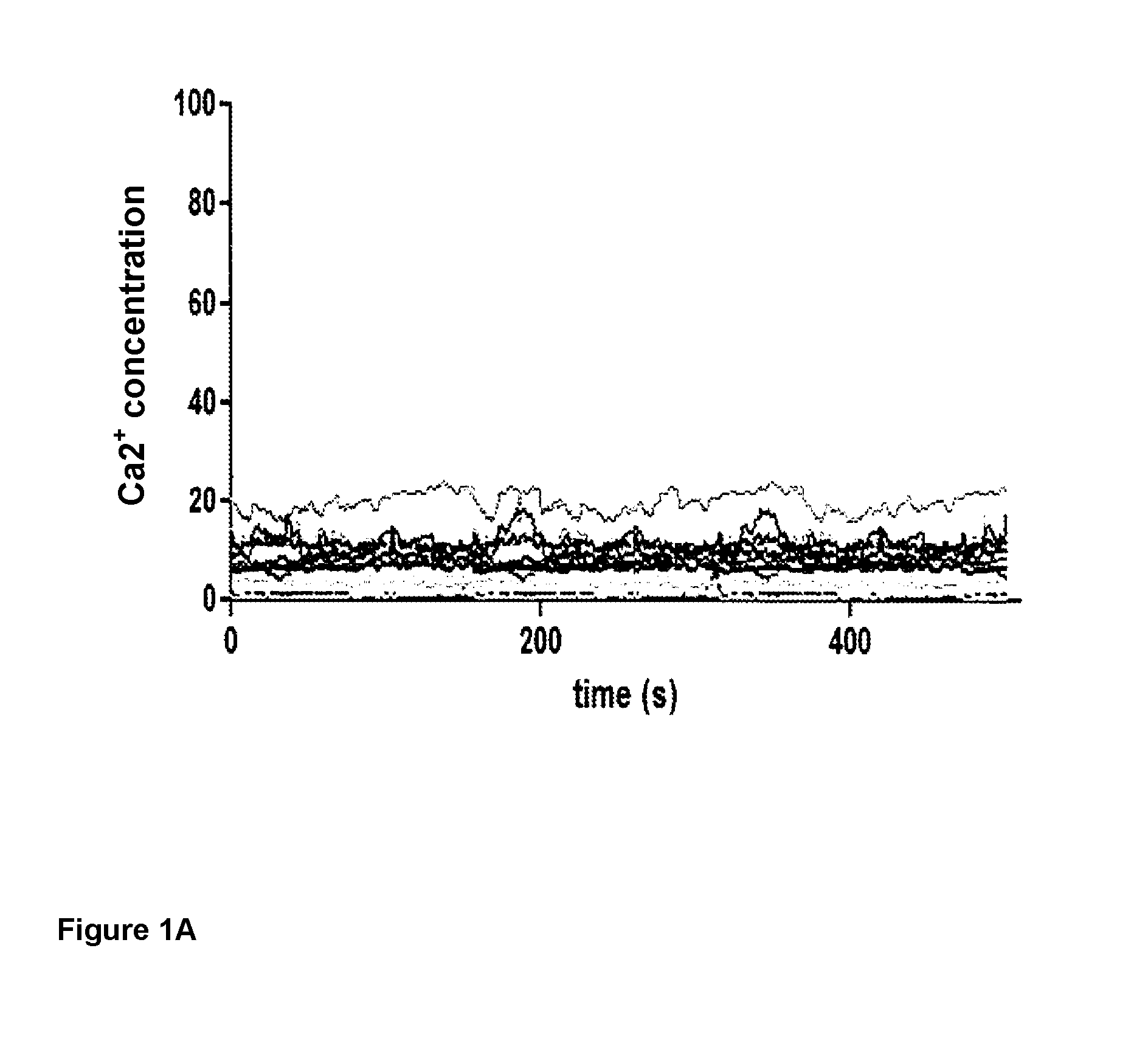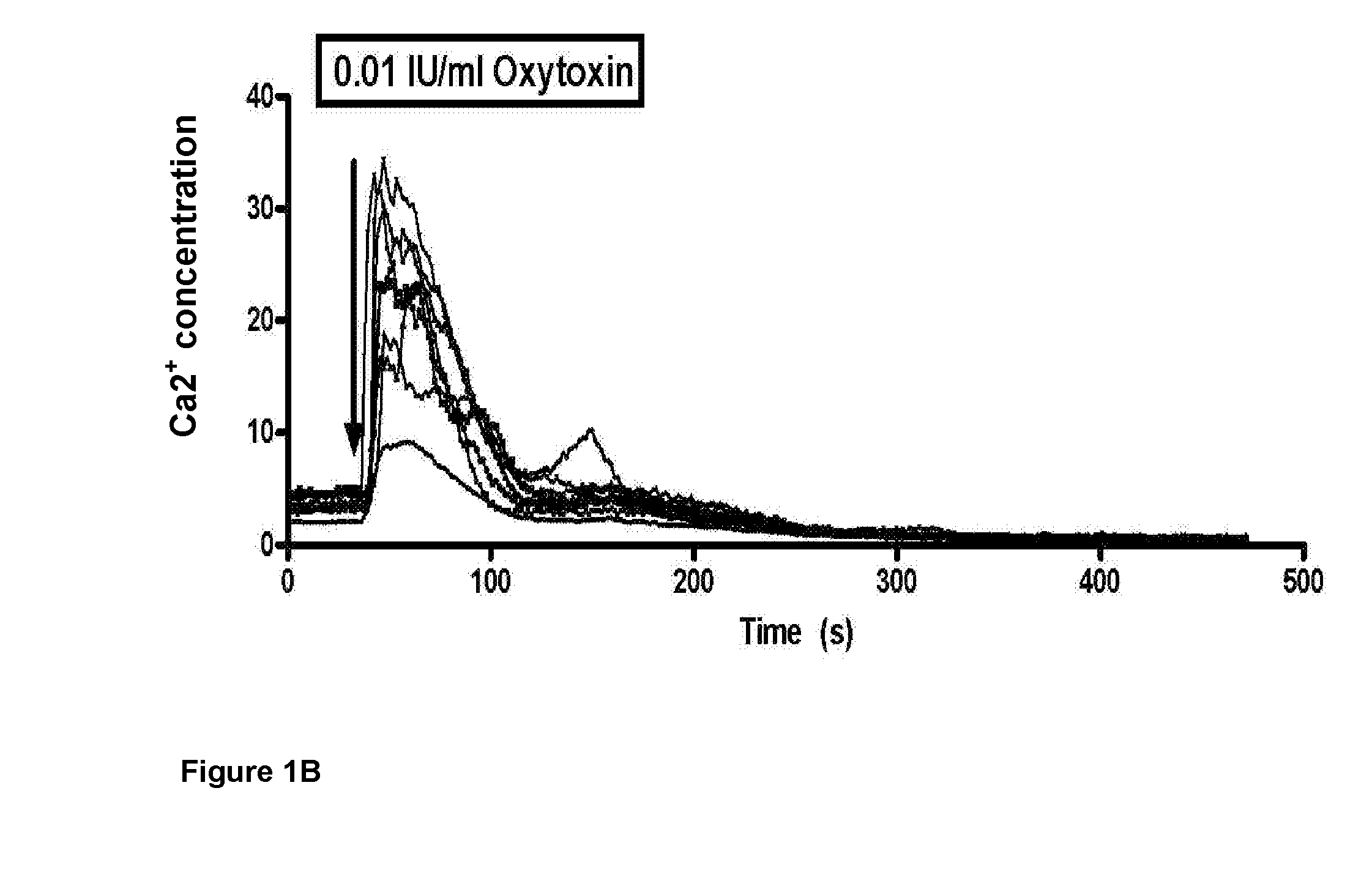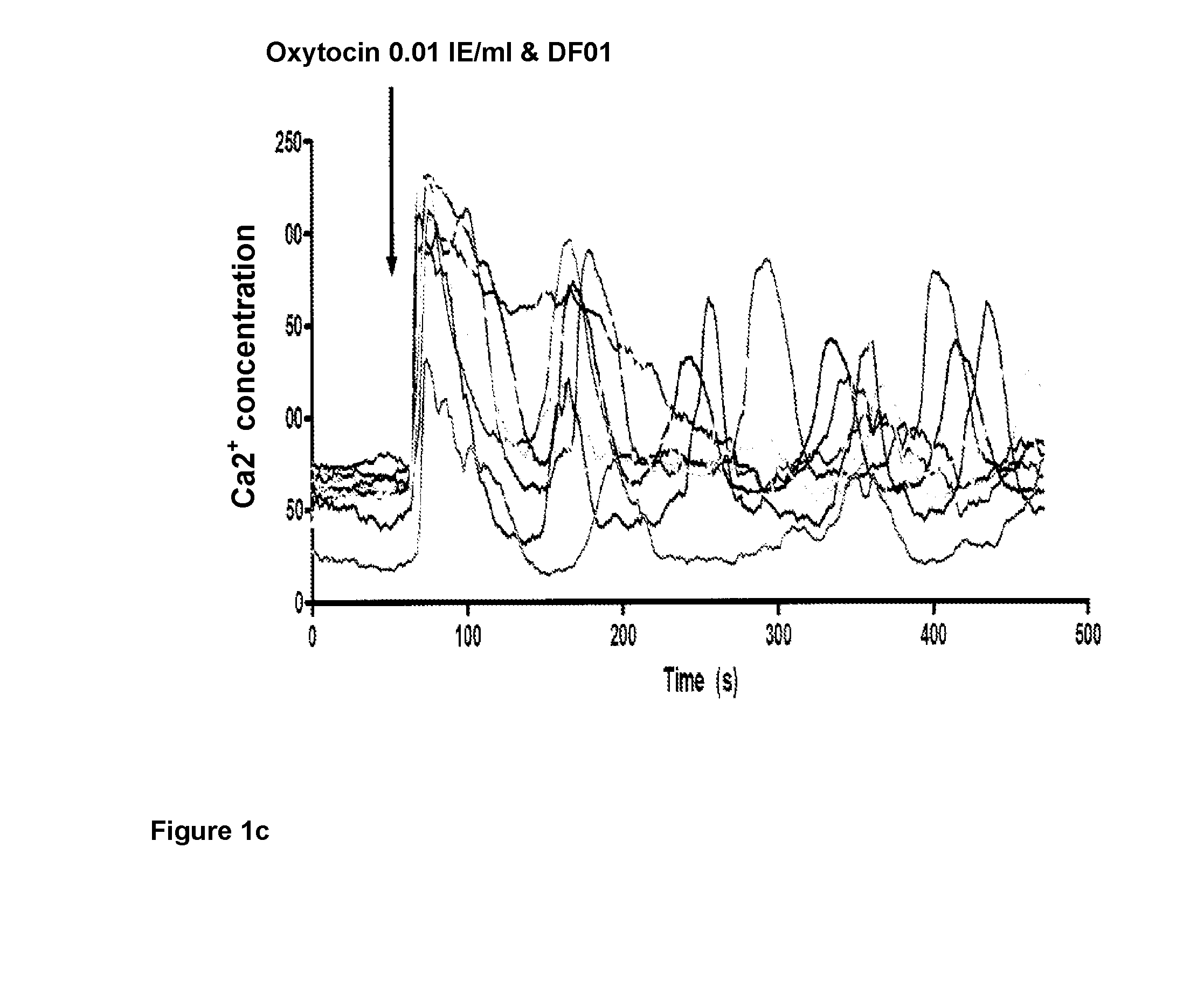Treatment of postpartum haemorrhage with chemically modified heparin or heparan sulphate and a uterotonic agent
a technology of heparin or heparan sulphate and uterotonic agent, which is applied in the direction of drug composition, extracellular fluid disorder, peptide/protein ingredient, etc., can solve the problems of rapid blood loss, insufficient occlusion, and uncontrolled haemorrhage, and achieve the effect of promoting myometrial contraction of the uterus
- Summary
- Abstract
- Description
- Claims
- Application Information
AI Technical Summary
Benefits of technology
Problems solved by technology
Method used
Image
Examples
example 1
Oxidation of Non-Sulfated Glucuronic- and Iduronic Acid (Residues), Deletion of AT-Binding Pentasaccharide and Anticoagulant Activity
[0059]A quantity of about 3000 grams of heparin is dissolved in purified water to obtain a 10-20% w / v solution. The pH of this solution is adjusted to 4.5-5.5. The sodium metaperiodate (NaIO4) is subsequently added to the process solution; quantity of periodate 15-25% of the weight of heparin. The pH is again adjusted to 4.5-5.5. The reaction is protected from light. The process solution is reacted during the 18-24 hours with constant stirring maintenance of the temperature at 13-17° C., while the temperature is reduced to 5° C. during the last two hours.
Termination of the Oxidation Reaction and Removal of Iodine-Containing Compounds
[0060]Ethanol (95-99.5%) is added to the reaction mixture over a period of 0.5-1 hour, with careful stirring and at a temperature of 5-25° C. The volume of ethanol to be added is in the range 1-2 volumes of ethanol per volu...
example 2
Oxidation of Glucuronic and Iduronic Acid (Residues), Deletion of Anticoagulant Activity
[0065]A quantity of about 3000 grams of heparin is dissolved in purified water to obtain a 10-20% w / v solution. The pH of this solution is adjusted to 4.5-5.5. The sodium metaperiodate (NaIO4) is subsequently added to the process solution; quantity of periodate 15-25% of the weight of heparin. The pH is again adjusted to 4.5-5.5. The reaction is protected from light. The process solution is reacted during the 22-26 hours with constant stirring and maintenance of the temperature at 13-17° C., while the temperature is reduced to 5° C. during the last two hours. The pH at the end of the reaction period is measured and recorded.
Termination of the Oxidation Reaction and Removal of Iodine-Containing Compounds
[0066]Ethanol (95-99.5%) is added to the reaction mixture over a period of 0.5-1 hour, with careful stirring and at a temperature of 5-25° C. The volume of ethanol to be added is in the range 1-2 v...
example 3
Oxidation of Glucuronic and Iduronic Acid (Residues), Deletion of Anticoagulant Activity
[0070]A quantity of about 3000 grams of heparin is dissolved in purified water to obtain a 10-20% w / v solution. The pH of this solution is adjusted to 4.5-5.5. The sodium metaperiodate (NaIO4) is subsequently added to the process solution, quantity of periodate 15-25% of the weight of heparin. The pH is again adjusted to 4.5-5.5. The reactor is protected from light. The process solution is reacted during the 18-24 hours with constant stirring maintenance of the temperature at 13-17° C., while the temperature is reduced to 5° C. during the last two hours.
De-Polymerization of Polysaccharide Chains by an Alkaline Beta Elimination Process
[0071]While maintaining the temperature at 5-25° C., 4 M NaOH solution is added slowly until a pH of 10.5-12 is obtained. The reaction is initiated and proceeds for 15-95 minutes. At this time, the pH of the solution is recorded and 4 M HCl is added slowly until a pH...
PUM
| Property | Measurement | Unit |
|---|---|---|
| molecular weights | aaaaa | aaaaa |
| molecular weights | aaaaa | aaaaa |
| molecular weight | aaaaa | aaaaa |
Abstract
Description
Claims
Application Information
 Login to View More
Login to View More - R&D
- Intellectual Property
- Life Sciences
- Materials
- Tech Scout
- Unparalleled Data Quality
- Higher Quality Content
- 60% Fewer Hallucinations
Browse by: Latest US Patents, China's latest patents, Technical Efficacy Thesaurus, Application Domain, Technology Topic, Popular Technical Reports.
© 2025 PatSnap. All rights reserved.Legal|Privacy policy|Modern Slavery Act Transparency Statement|Sitemap|About US| Contact US: help@patsnap.com



